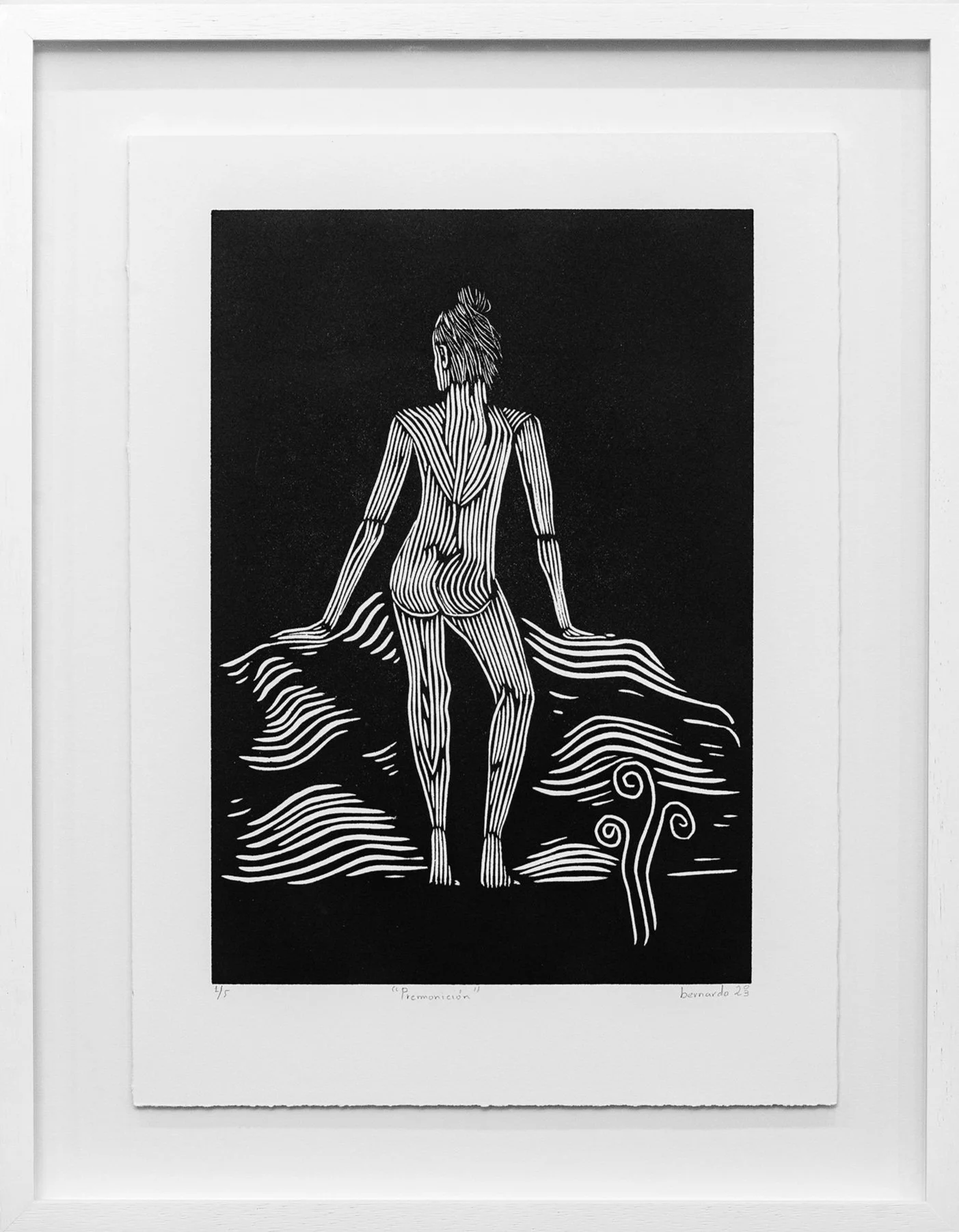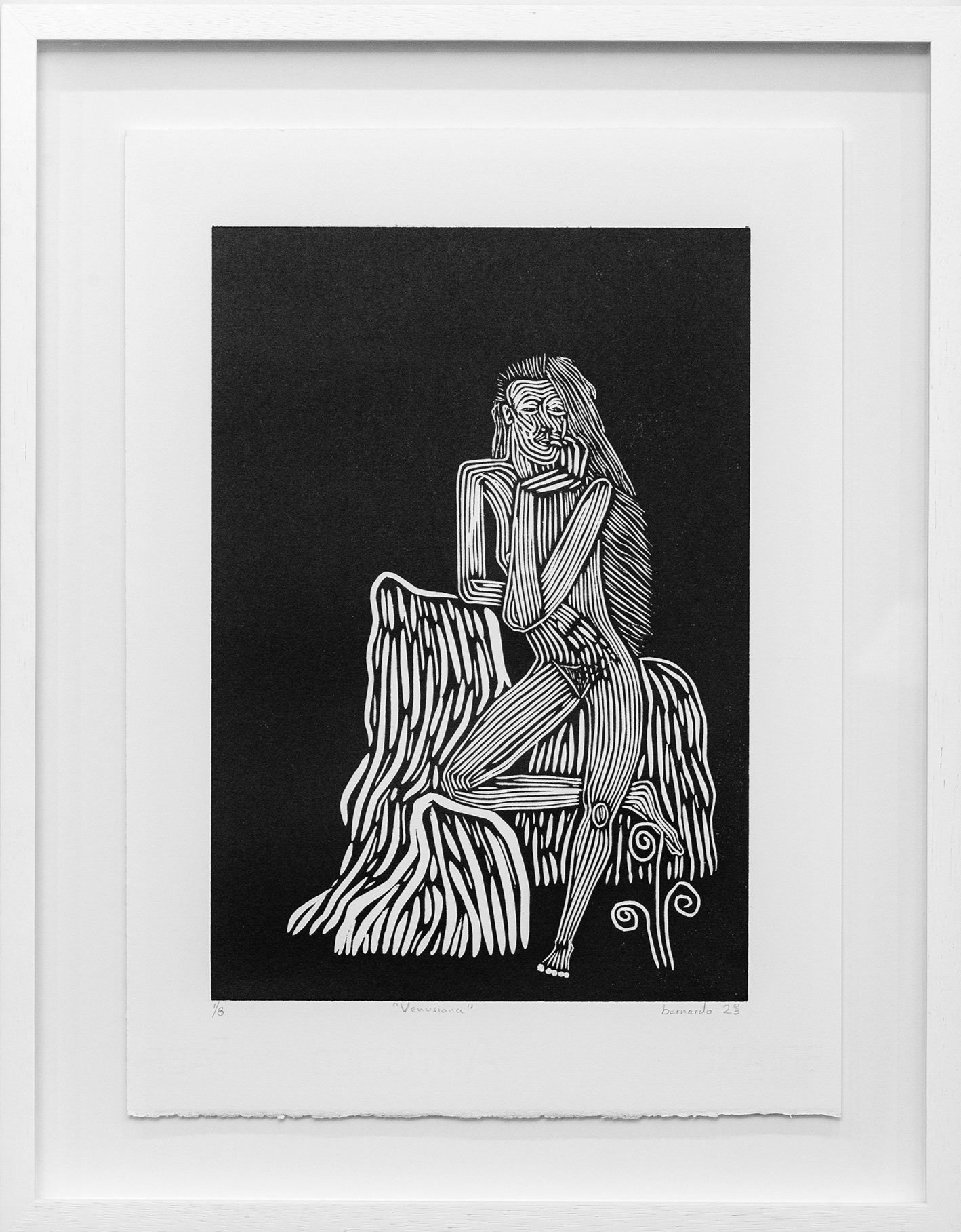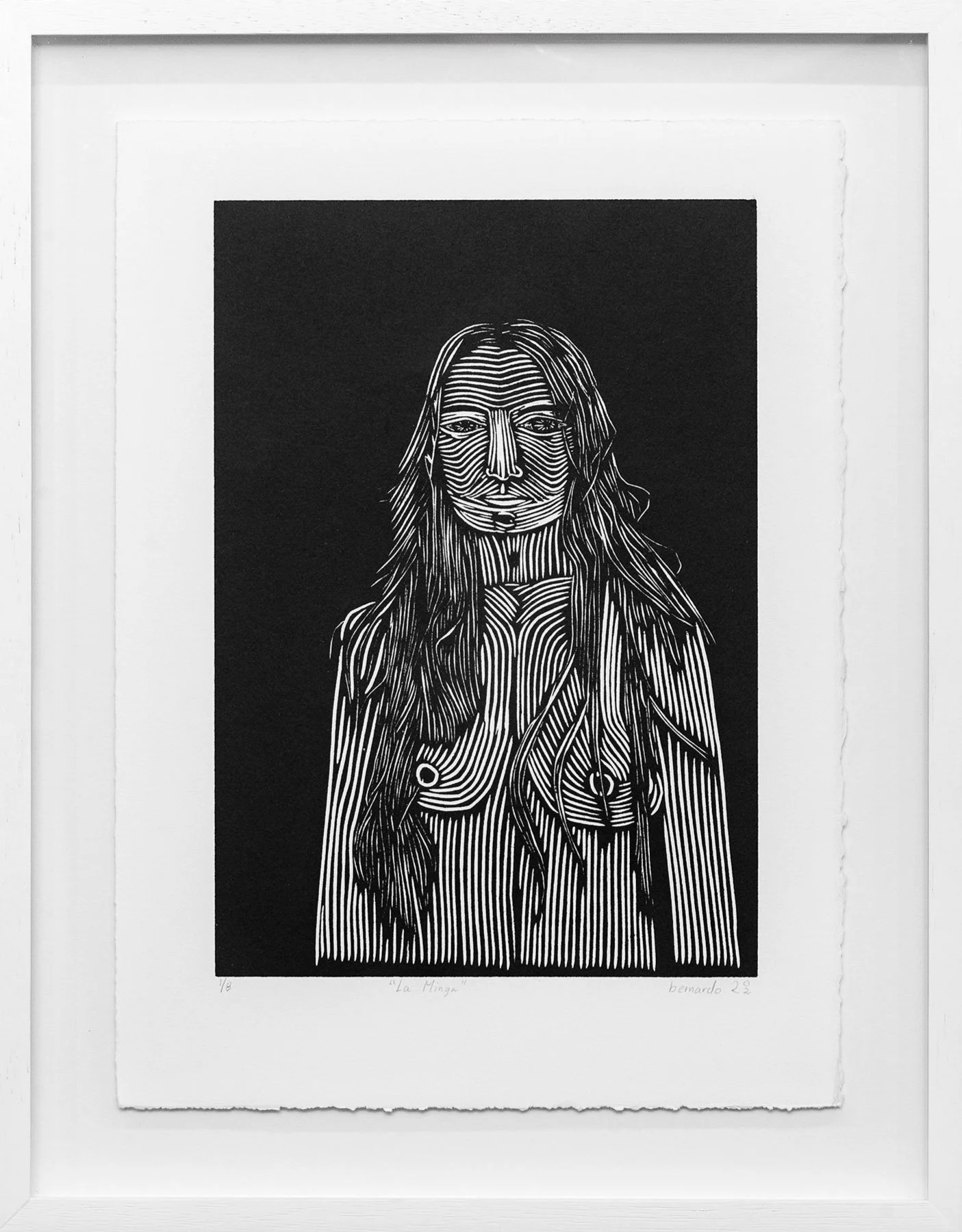Venusians
Venusianas: between body and divinity
In Venusianas, a collection of the visual works by Bernardo Falconi, the central axis is the woman, a mystical and ethereal woman, but still beautifully earthly. This series of portraits propose an intertextuality with the painting “The Birth of Venus” by Sandro Botticelli: the goddess of love and wisdom born from the ocean waves arrives to earth as a gift. The inevitable classical reference lets us confirm that these xylographies reflect a very old paradox concerning how women are represented: they speak of a feminine mysticism connected to the divine and ethereal, but at the same time they show us women in casual attitudes, with their naked bodies openly shown; women who desire, who contemplate, like anyone else, a landscape on the earth and therefore experience a strong connection to it. Falconi´s work reveals this dualism of the feminine archetype: divine and earthly.
The variety of textures and weaves created from high relief decorated with ink on paper speaks of the embodiment of women while other elements of the image, such as the gazes and the background, reflect the desire for connection with the divine. With respect to xylography, it is essential to study the line achieved through work on the matrix. In Venusianas, this technique lets the artist create a particular texture of the skin of these women: a series of lines that are formed from the contrast between the black ink and the white background of the paper, a texture that prompts interpretations. In the works “Potosi” and “Ether” the characters look like figurines: the white lines on black appear to be grains of pieces of polished wood which articulate to give movement to the puppet. Is Falconi perhaps suggesting to the observer that these bodies were made by a creator, an artist or an invisible or divine hand that, perhaps, is created in turn by another being a la Borges?
In other works, these marks left by the grooves in the matrix represent beams of light on the skin as in the work of a photographer or impressionist painter. In “Covid” for example, the chiaroscuro from the side lighting on the facial expression of the woman highlights her facial features. The objective of the picture card is not to be realistic but rather present a study on the effect of light on faces. In other works, these lines suggest anatomical illustrations. In “Premonition”, the back of the woman appears to be perforated by grains of wood that simulate the muscles of the human body.
The forms that are made from the lines invite the observer to interpret and to interact with the outward appearance of the work which promotes reflection on the divine. Also, the white marks intensify imagination of the body. The black background, which is the common thread of this collection, awakens worry about the infinite. The mirrors that these women use are vaguely suggested by lines. However, the complete obscurity always predominates in the picture cards. It would seem like these characters lived in an undetermined area, outer space or the ether, as suggested by one of the titles. In “Premonition,” the gaze of the woman, engrossed in the contemplation of the void, is lost in the horizon. This gaze upon the infinite takes us back to the idea suggested at the beginning of this text: feminine mysticism. That often-impossible desire to unite with the divine, but which necessarily lives with the material: the ink mark on the paper, nakedness, nature, desire and the Earth. As such, these Venusian women appear on paper. They emerge from the black space with their beauty as the goddess Helen of Troy emerges from the sea.
Alejandra Vela Hidalgo
January 2024
Premonition
Paper: 38cm x 28cm (Fabriano Tiépolo, 300gr)
Image: 30cm x 20,5cm
Ink: Charbonnel Woodcut Prints: 5 2023
Ether
Paper: 38cm x 28cm (Fabriano Tiépolo, 300gr)
Image: 30cm x 21cm
Ink: Charbonnel Woodcut Prints: 8 2023
Venusian
Paper: 38cm x 28cm (Fabriano Tiépolo, 300gr)
Image: 30cm x 21cm
Ink: Charbonnel Woodcut Prints: 8 2023
Asymptote
Paper: 38cm x 28cm (Fabriano Tiépolo, 300gr)
Image: 30cm x 21cm
Ink: Charbonnel Woodcut Prints: 8 2023
Potosí
Paper: 38cm x 28cm (Fabriano Tiépolo, 300gr)
Image: 30cm x 21cm
Ink: Charbonnel Woodcut Prints: 8 2022
From darkness to light
Paper: 38cm x 28cm (Fabriano Tiépolo, 300gr)
Image: 25cm x 20cm
Ink: Charbonnel Woodcut Prints: 8 2022
Unreachable
Paper: 38cm x 28cm (Fabriano Tiépolo, 300gr)
Image: 25cm x 20cm
Ink: Charbonnel Woodcut Prints: 8 2022
Warmi
Paper: 38cm x 38cm (Fabriano Tiépolo, 300gr)
Image: 25cm x 20cm
Ink: Charbonnel Woodcut Prints: 6 2022
Community Work
Paper: 38cm x 28cm (Fabriano Tiépolo, 300gr)
Image: 30cm x 21m
Ink: Charbonnel Woodcut Prints: 8 2022
Covid
Paper: 56cm x 38cm (Fabriano Tiépolo, 300gr)
Image: 30cm x 21cm
Ink: Charbonnel Woodcut Prints: 4 2022










